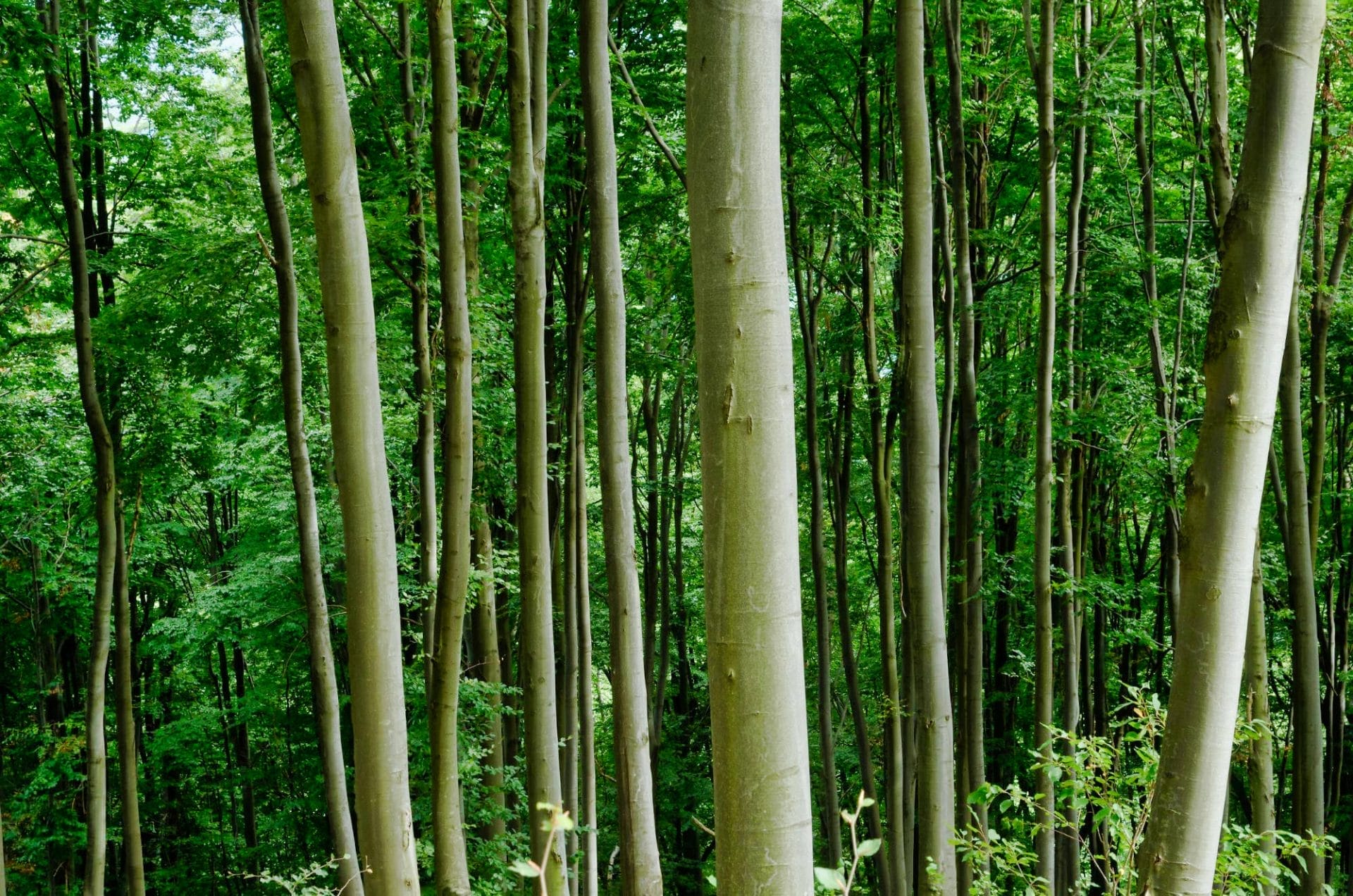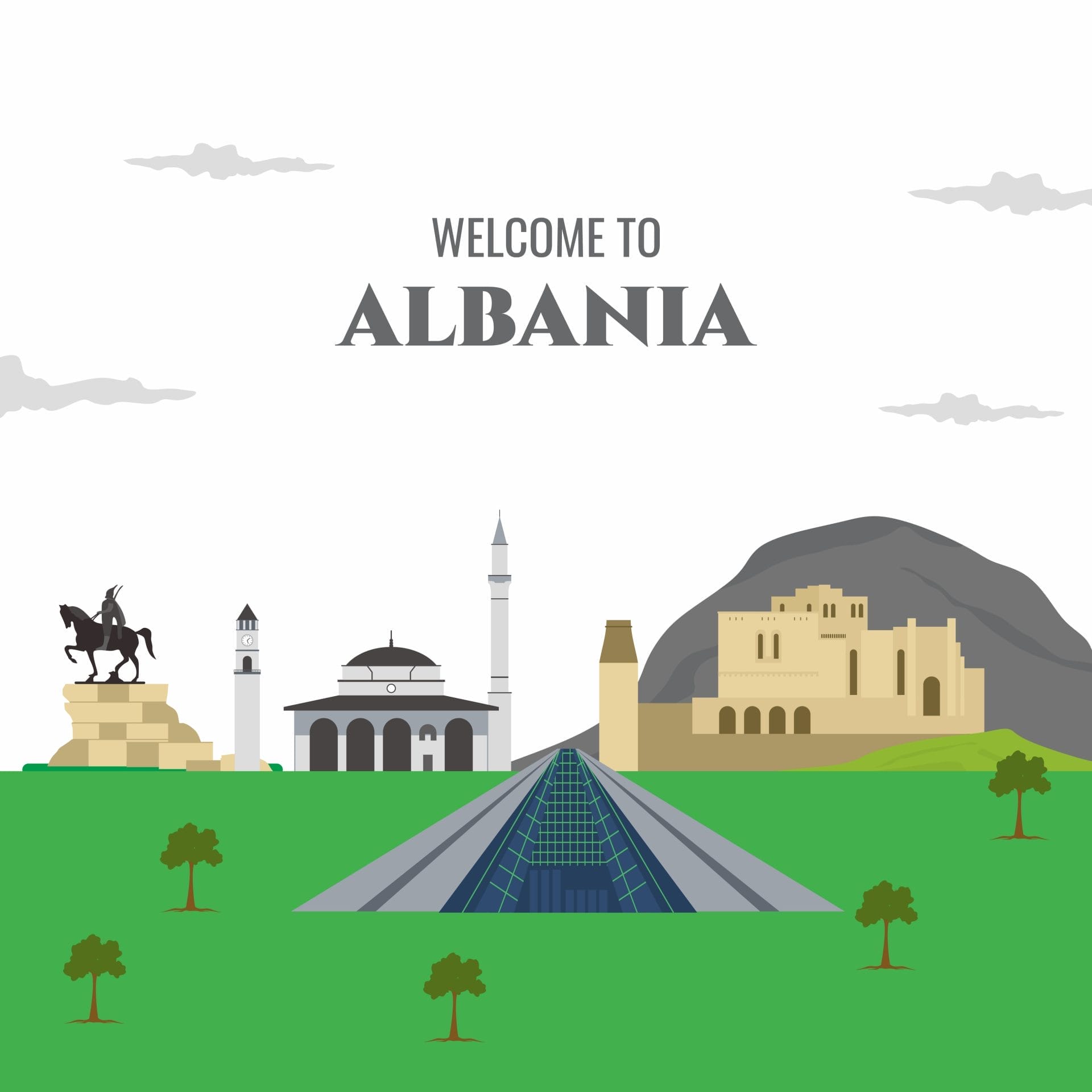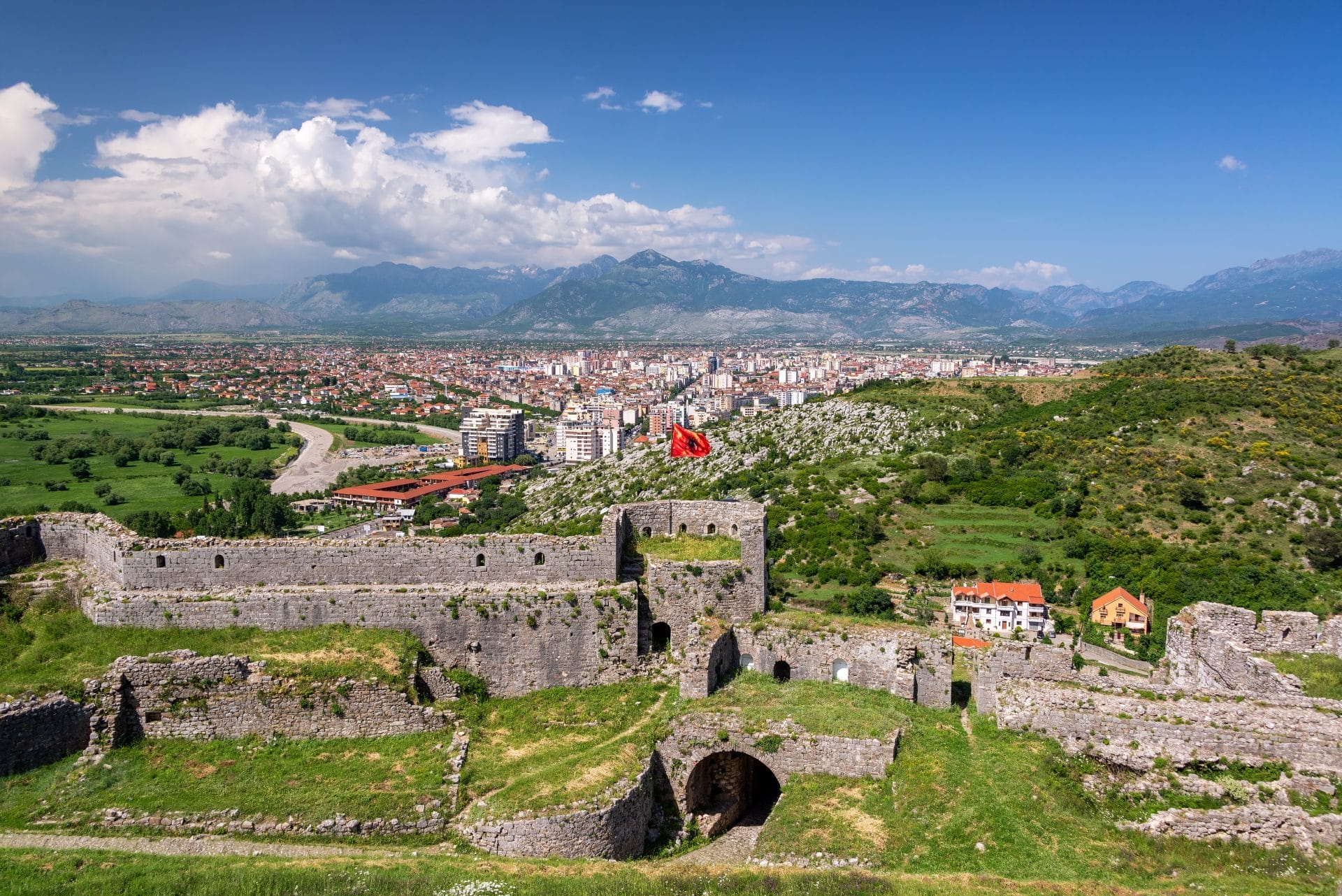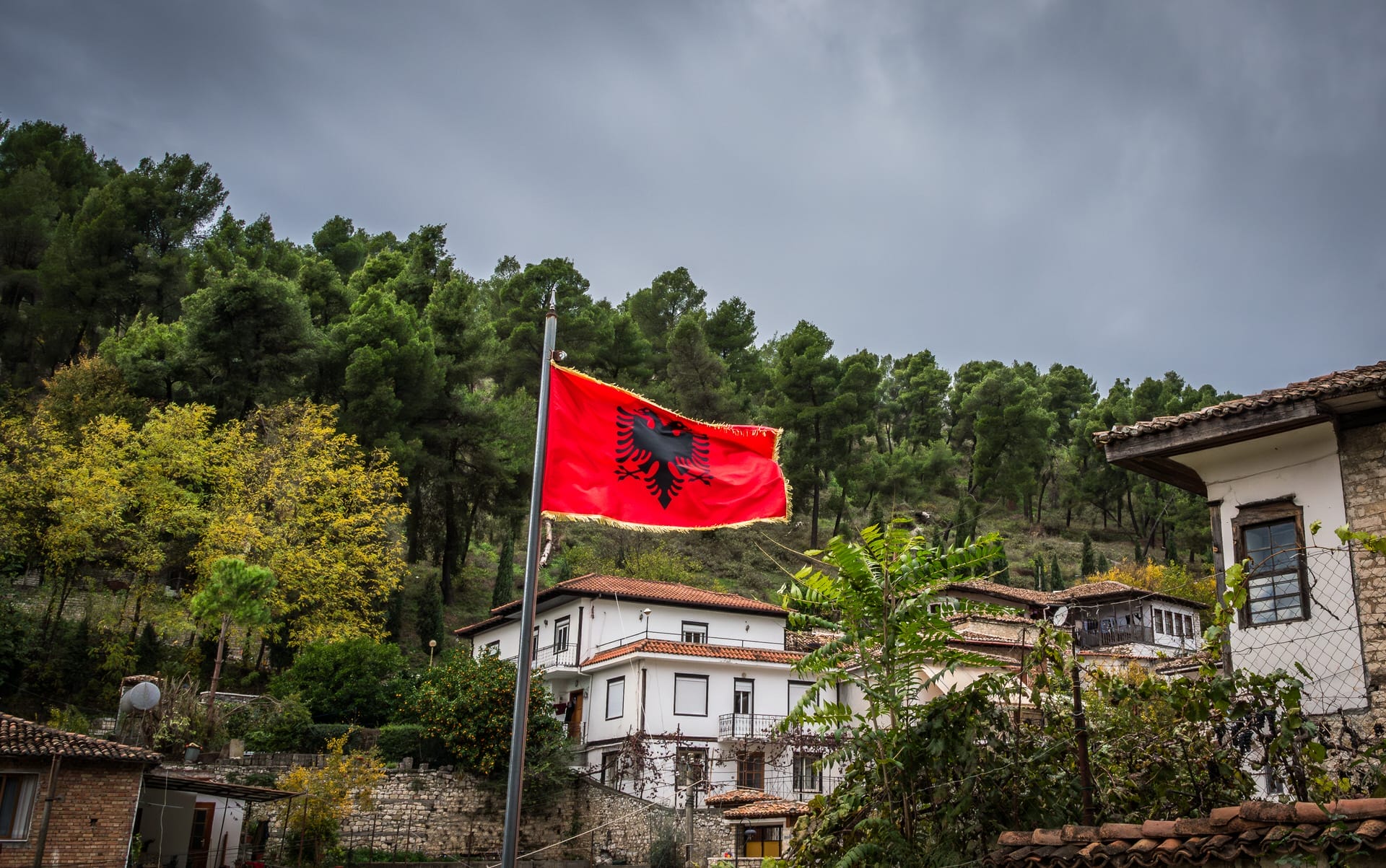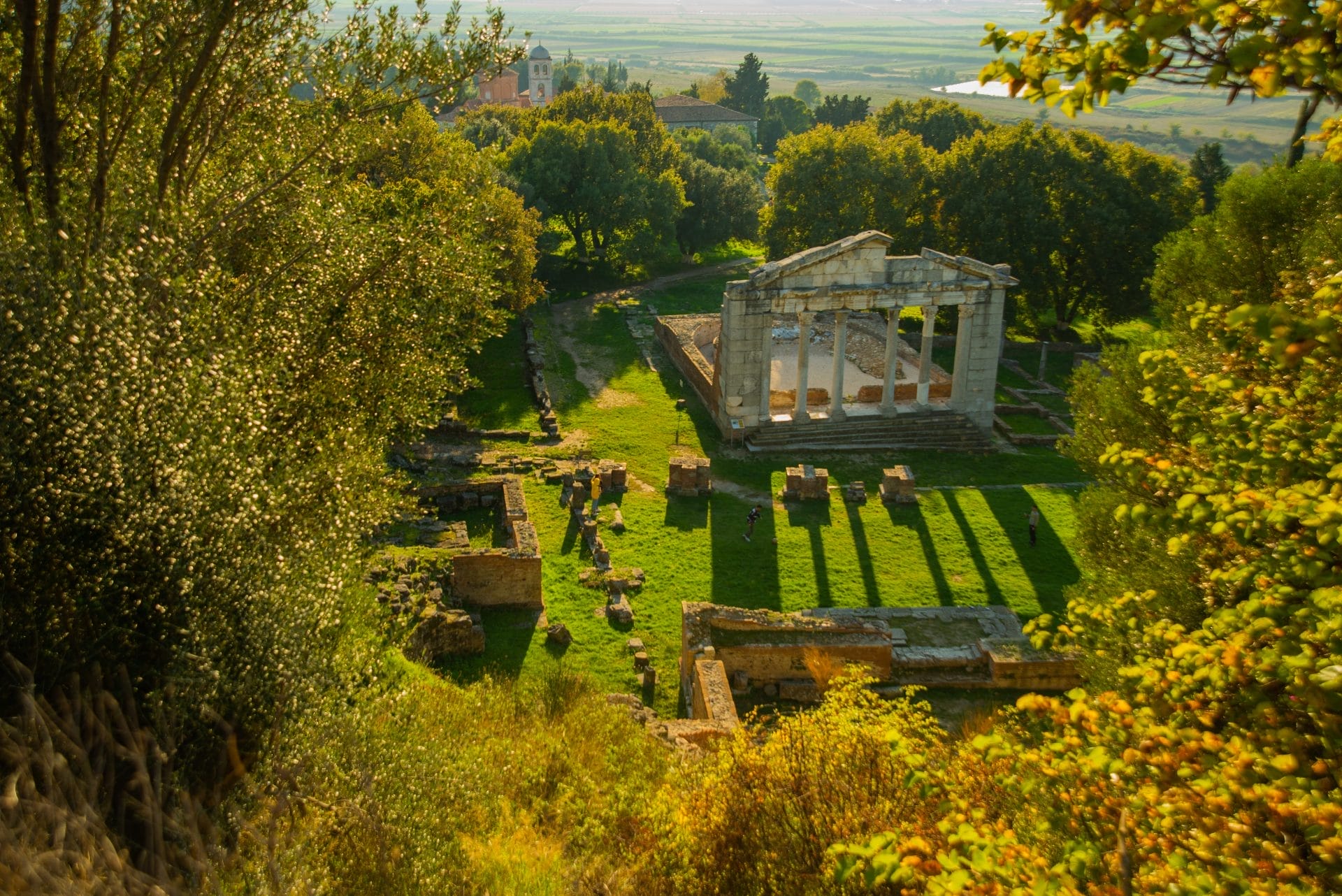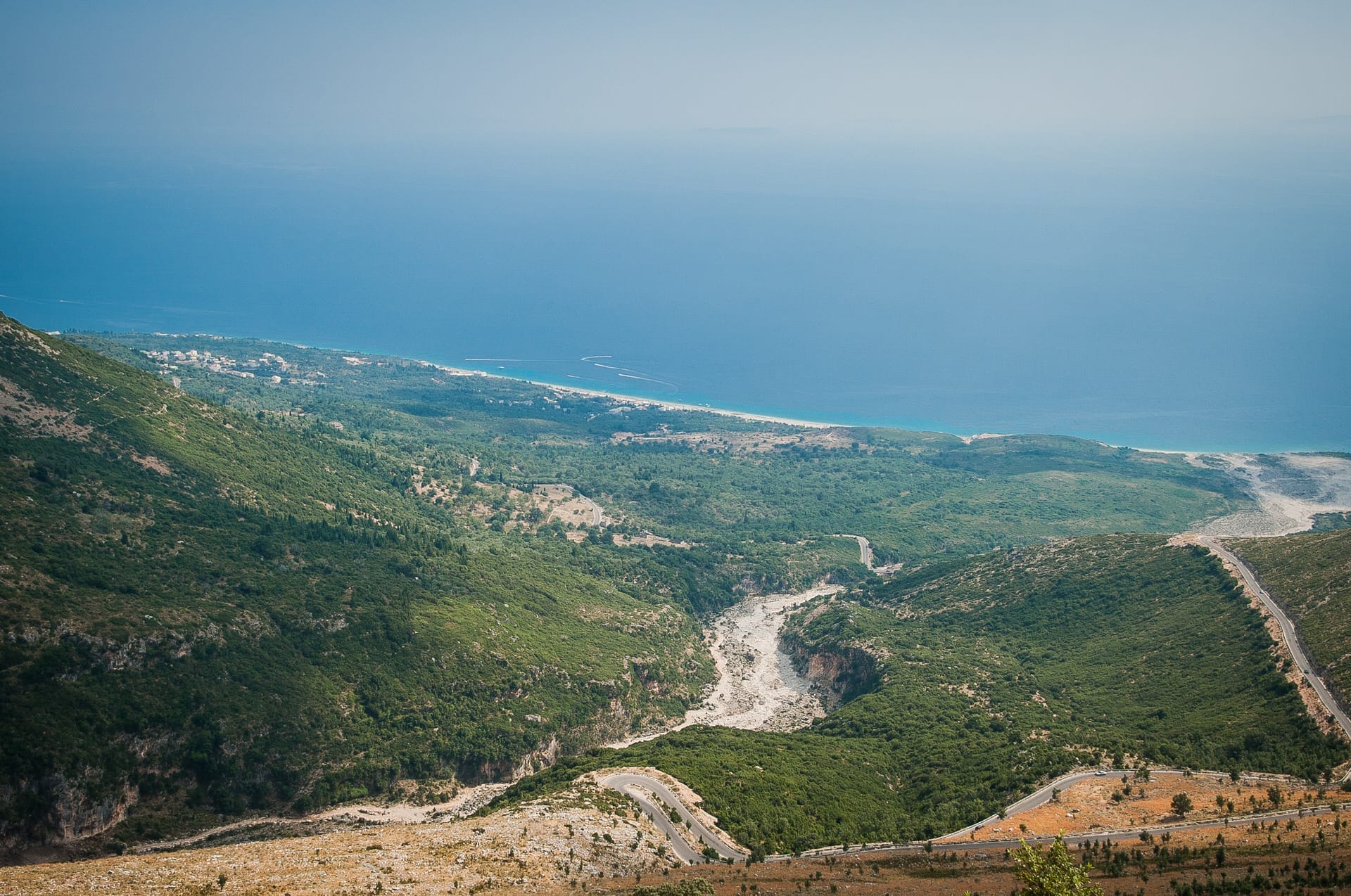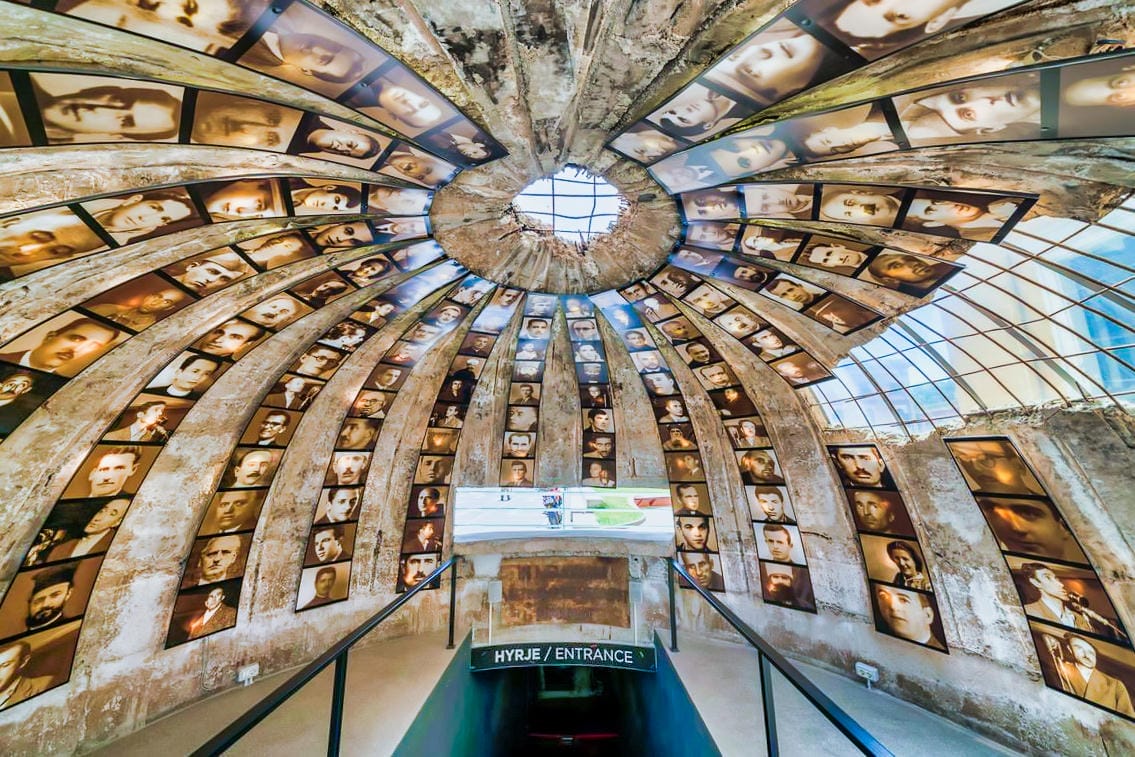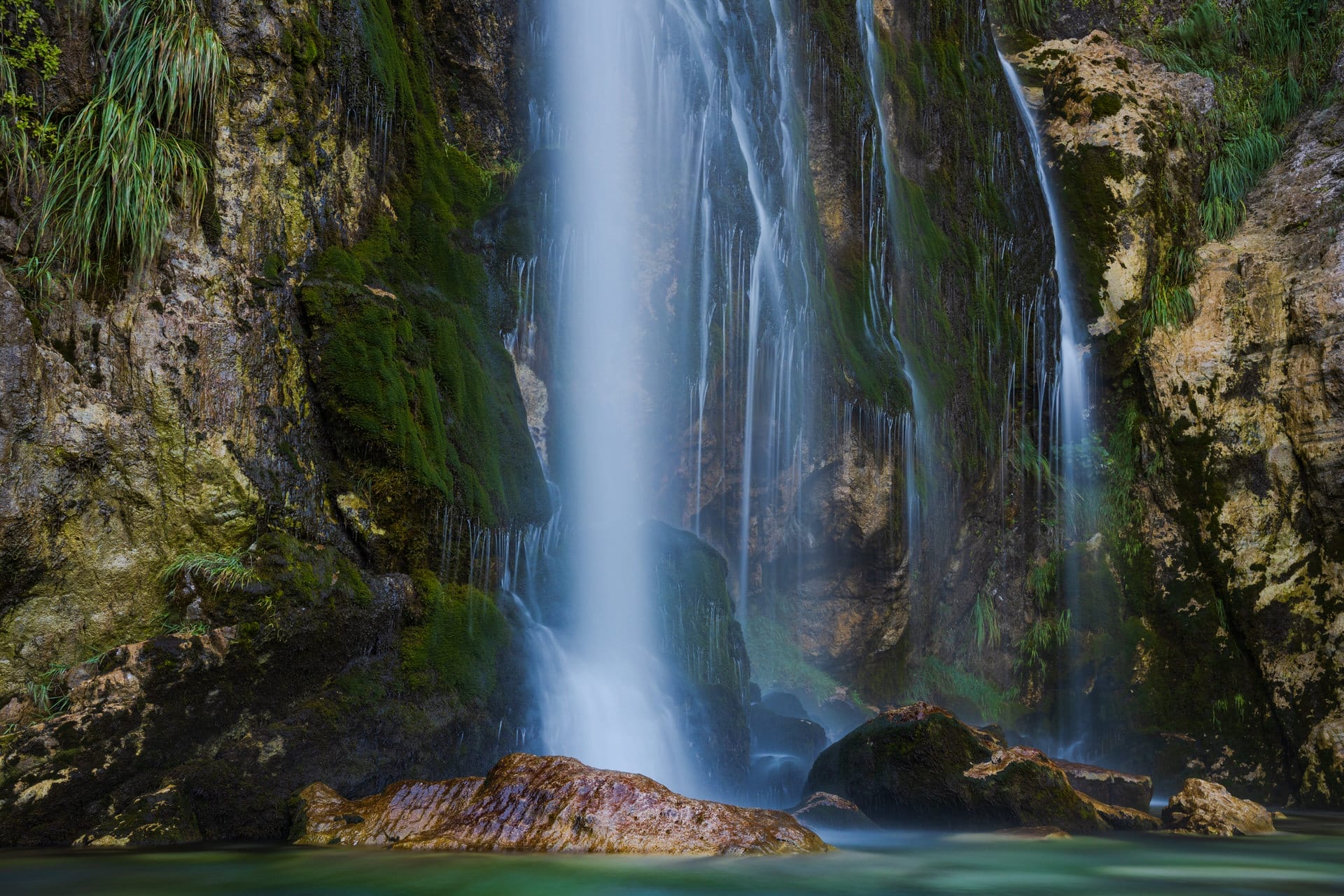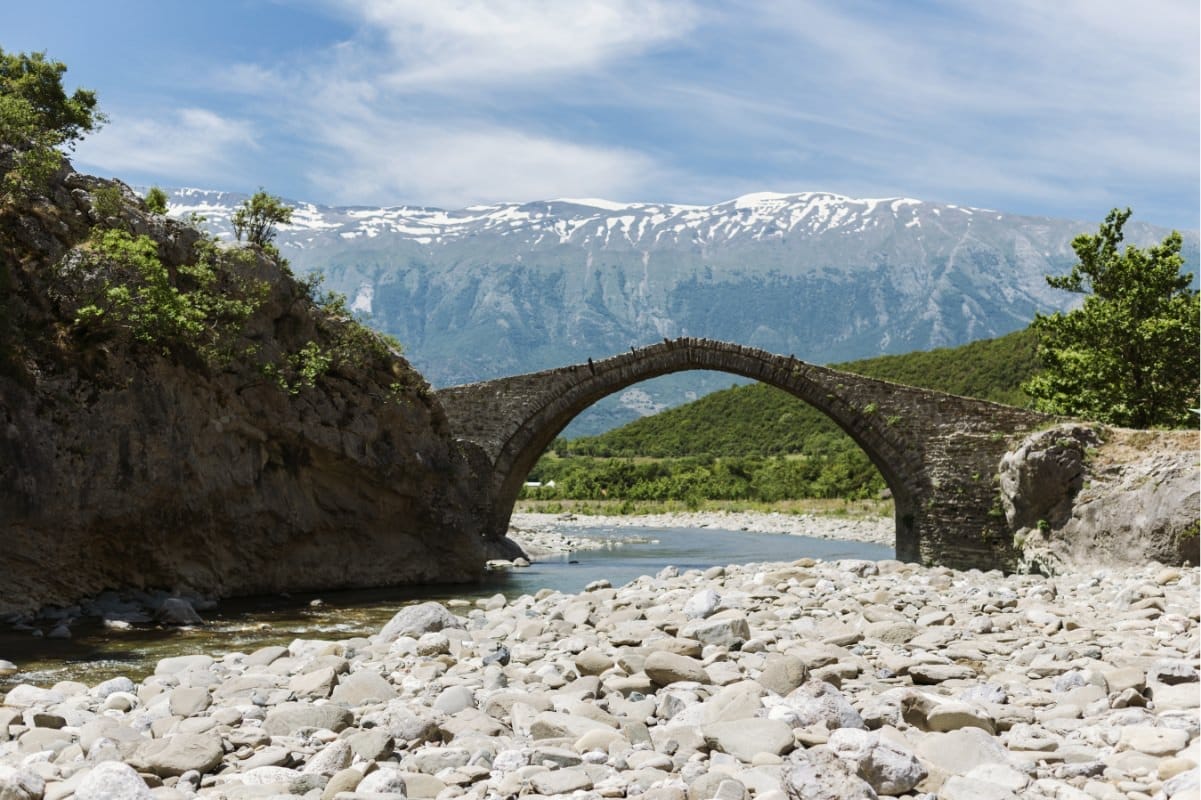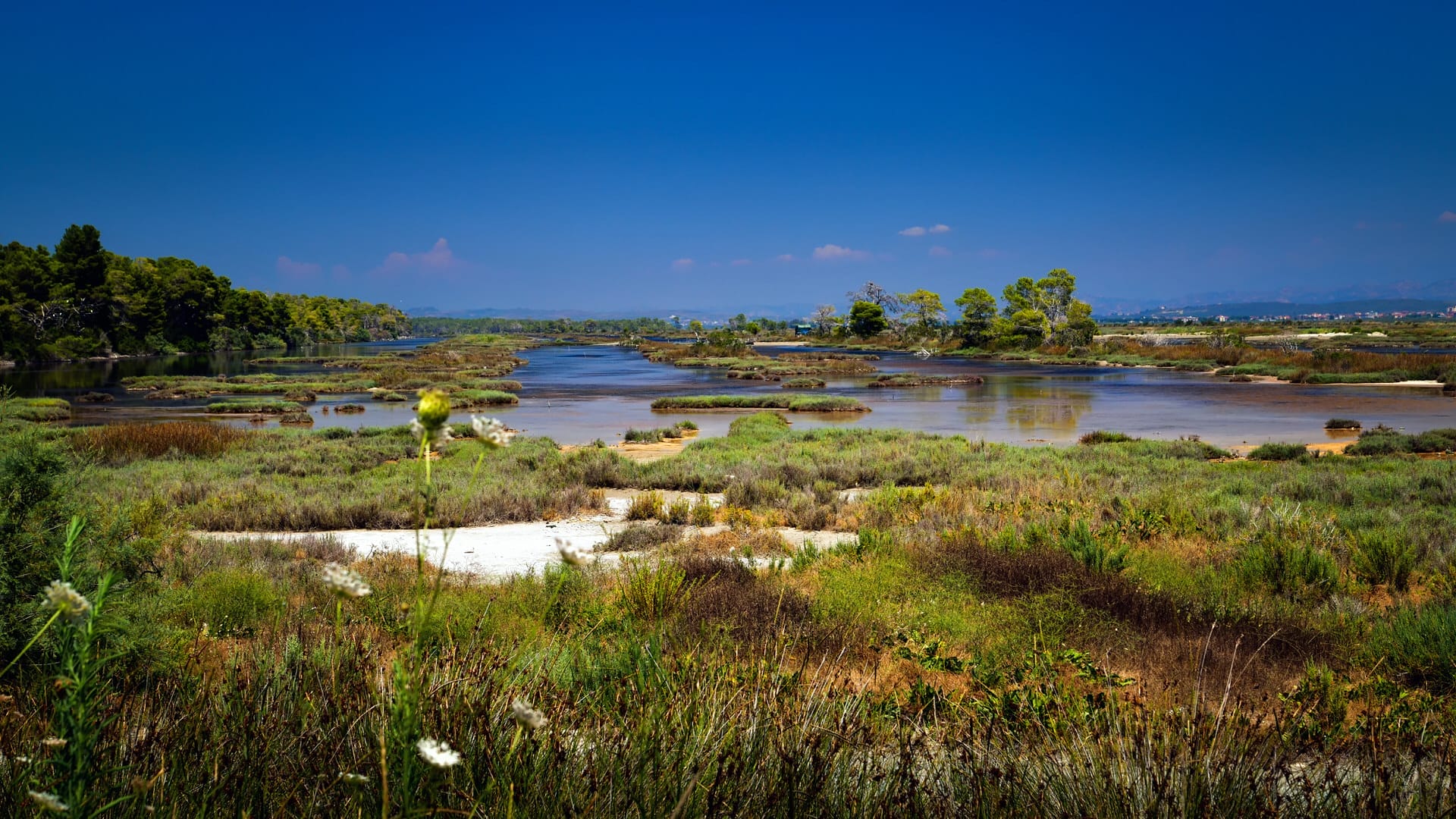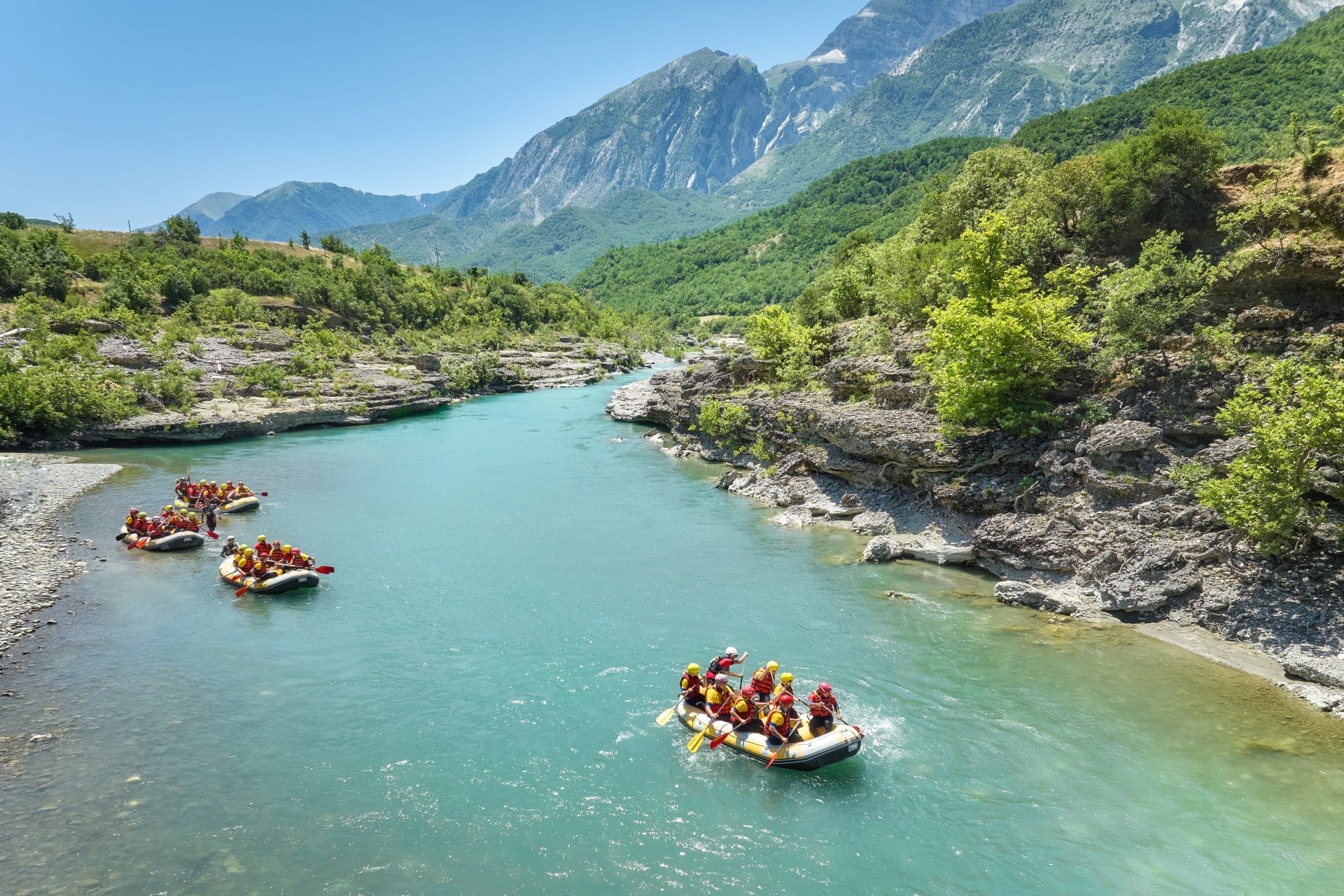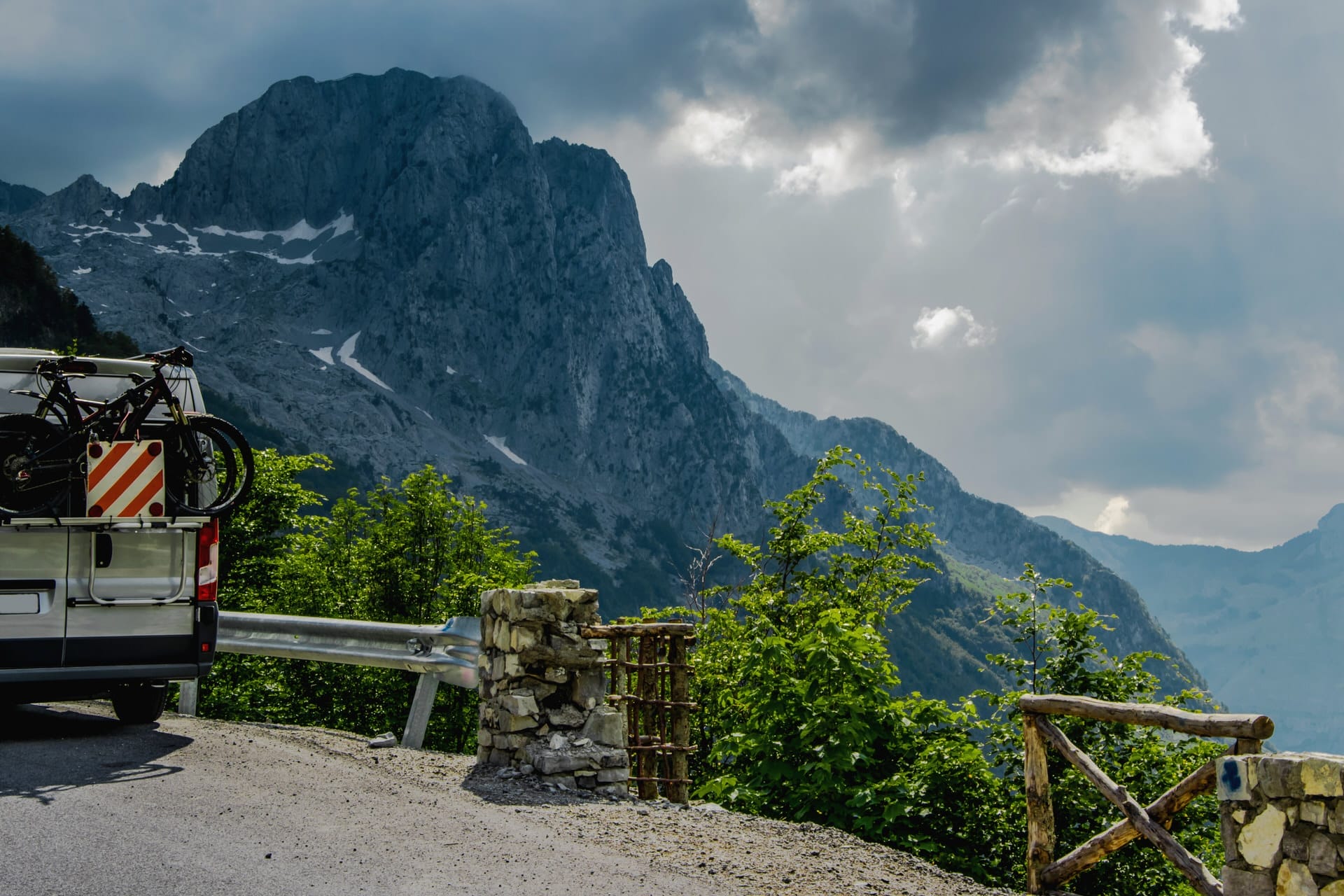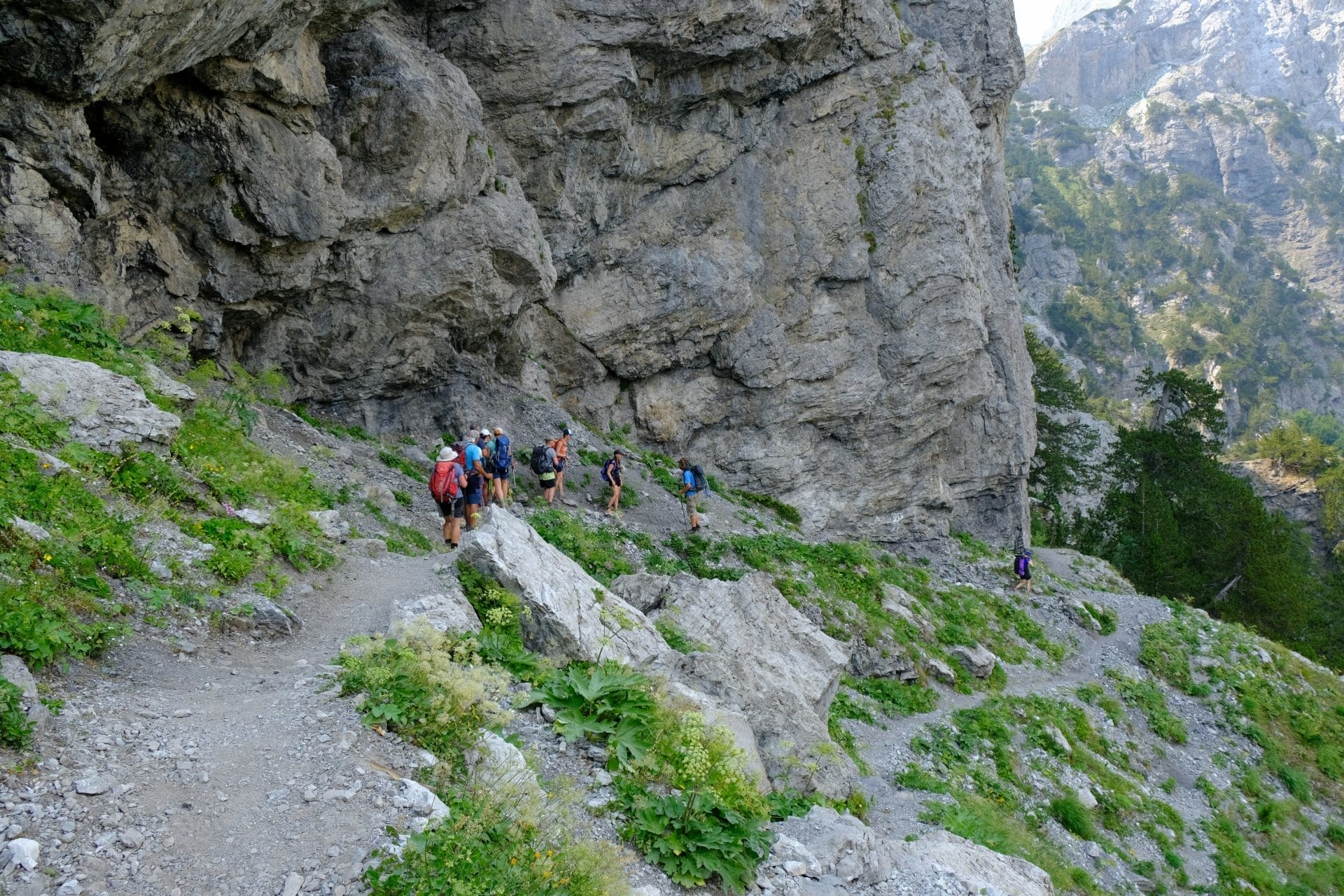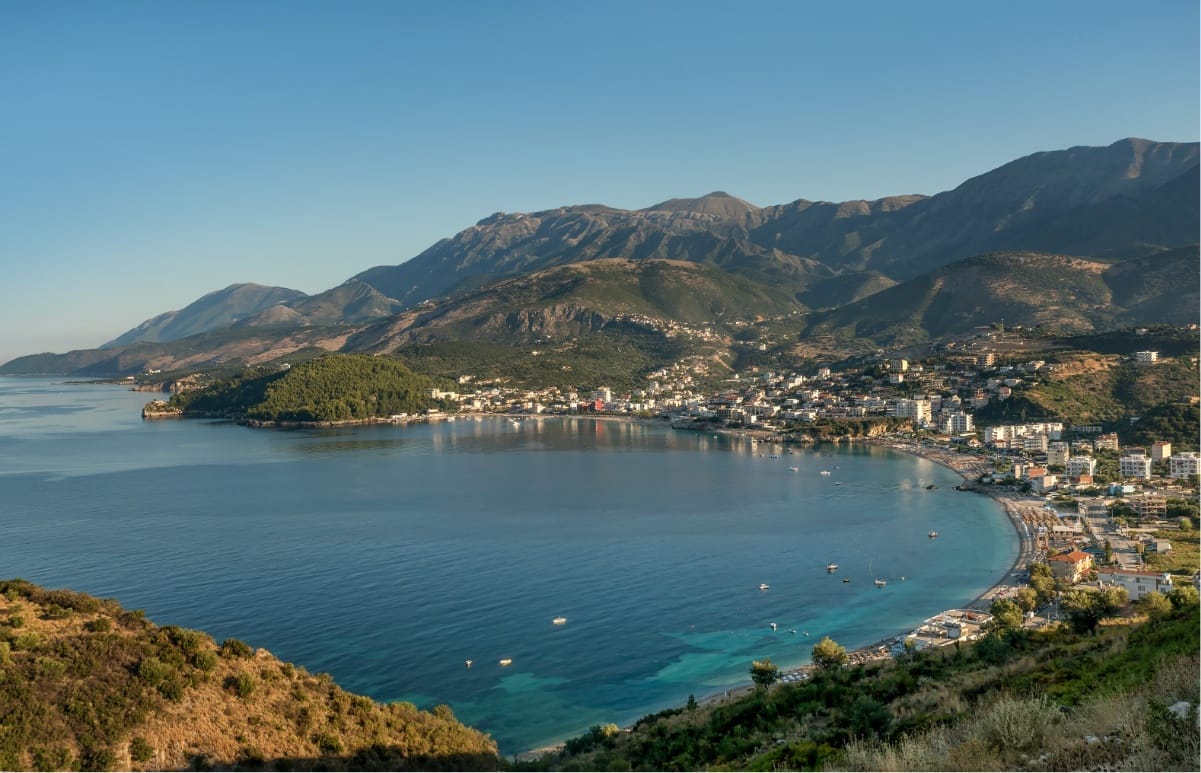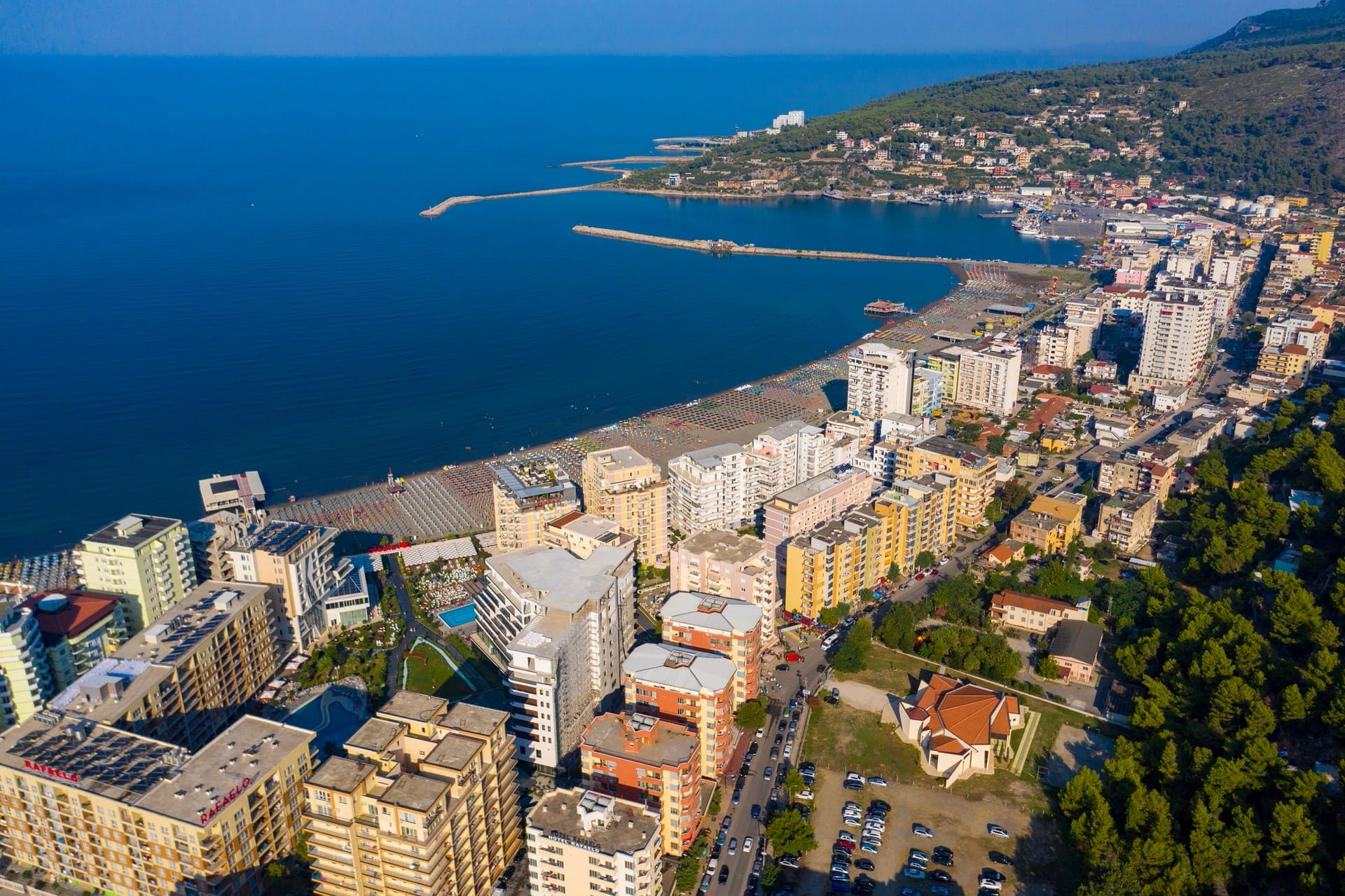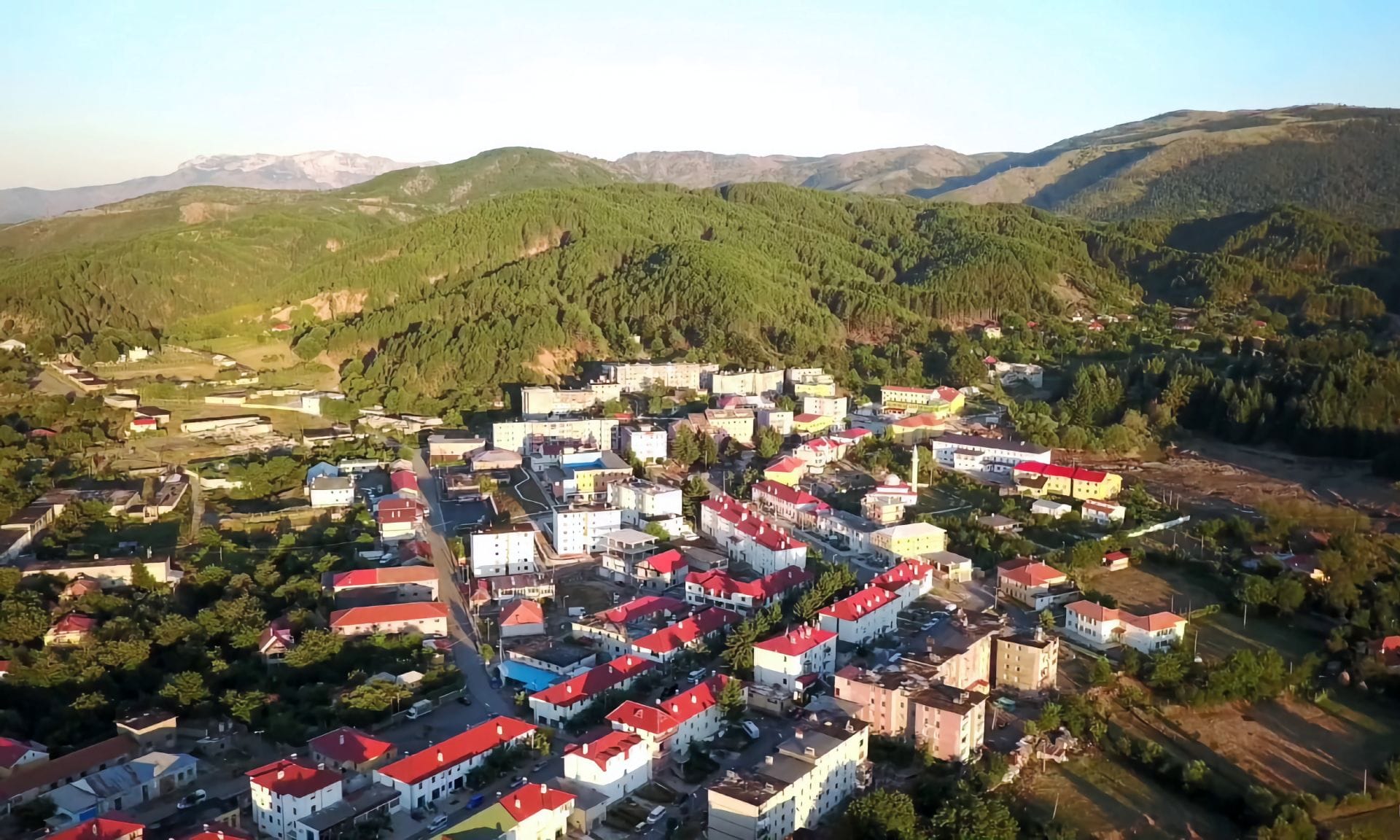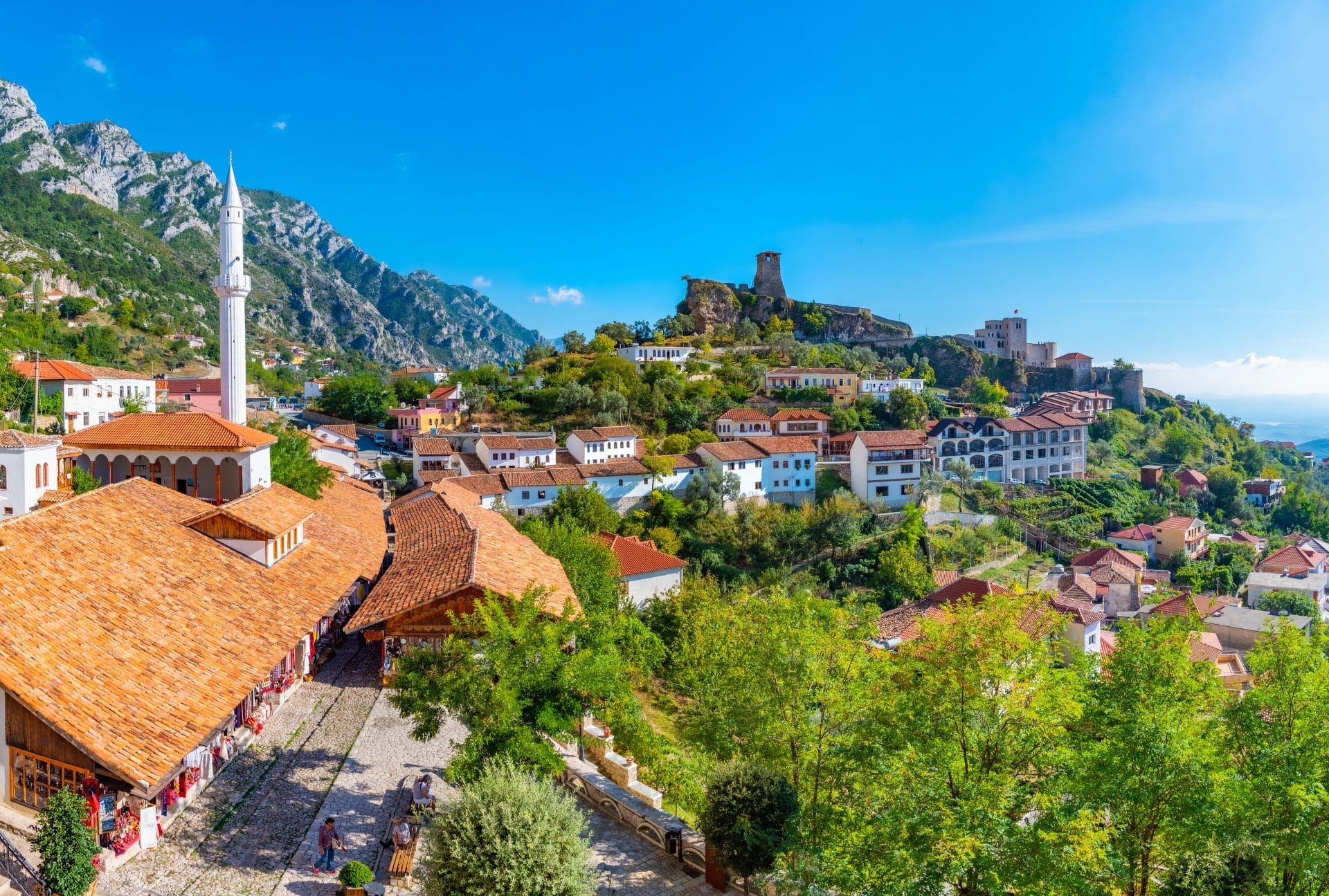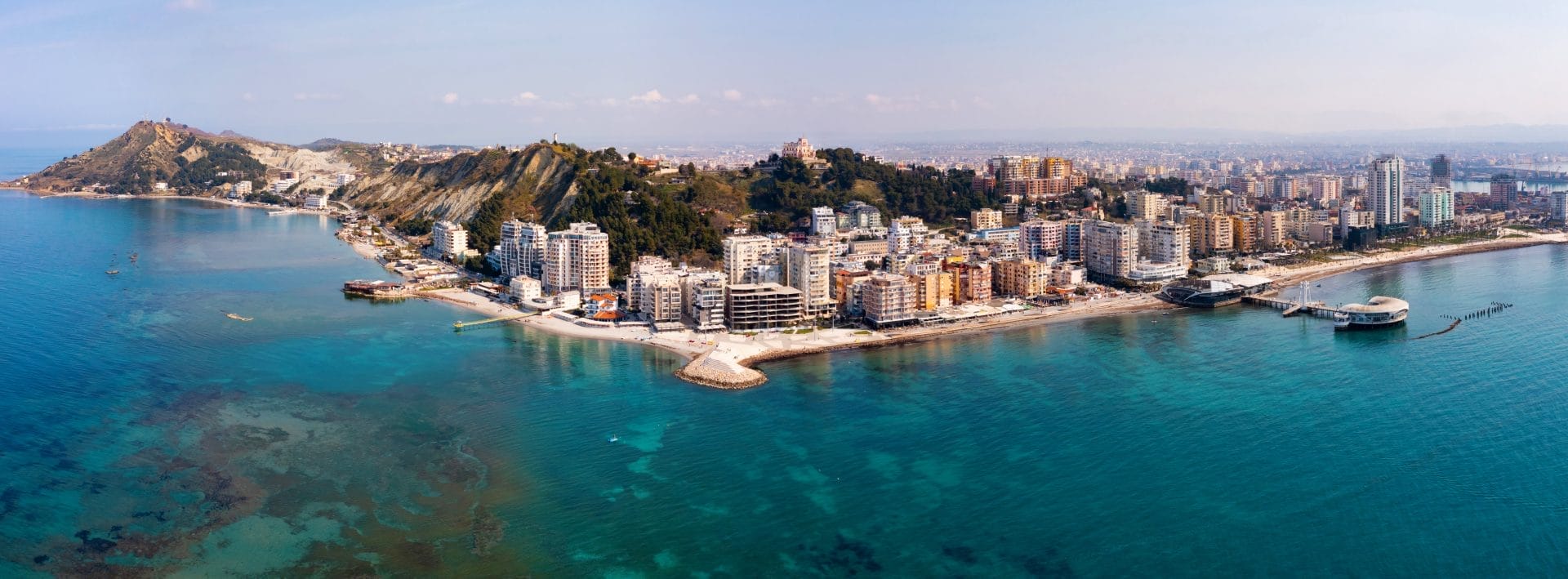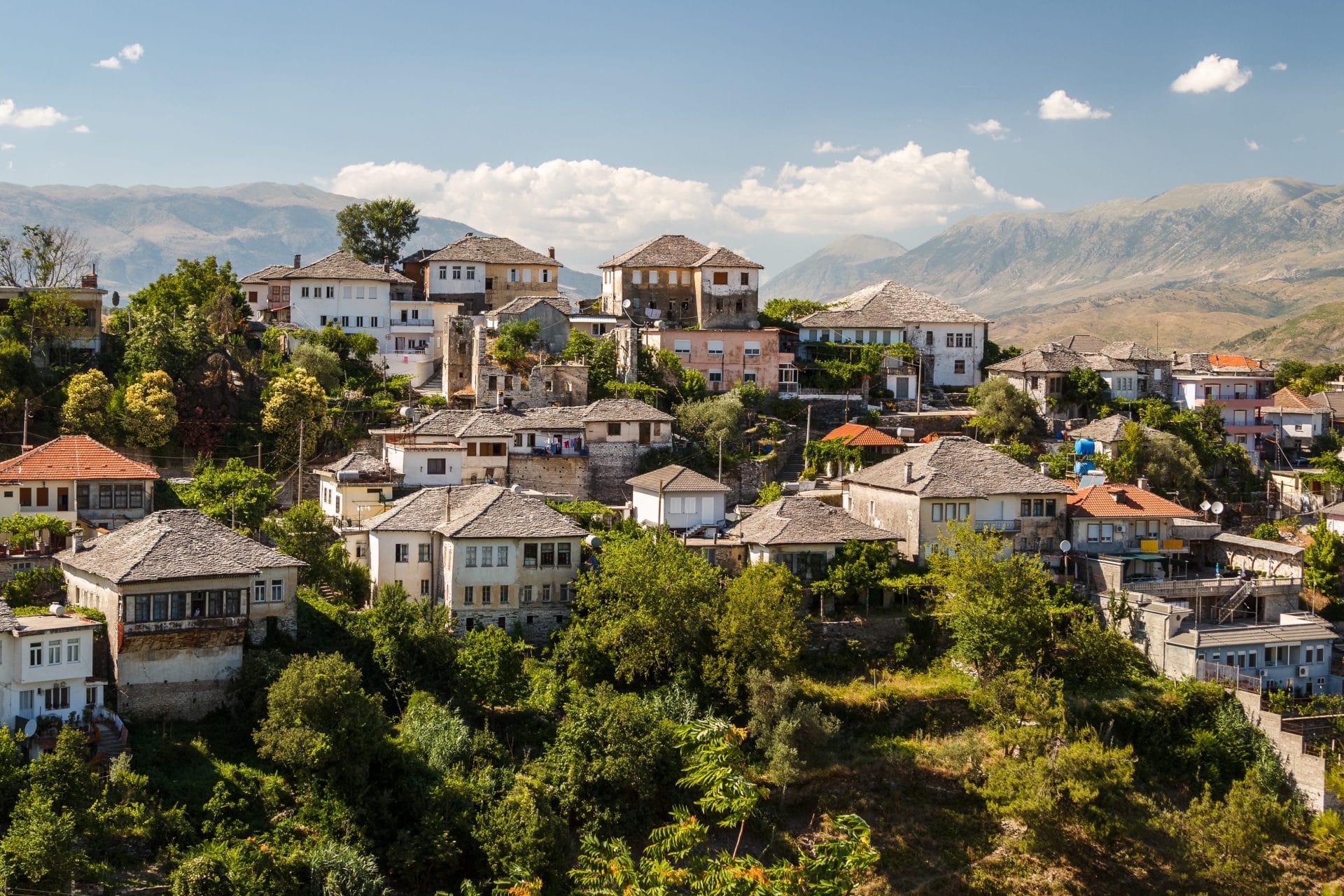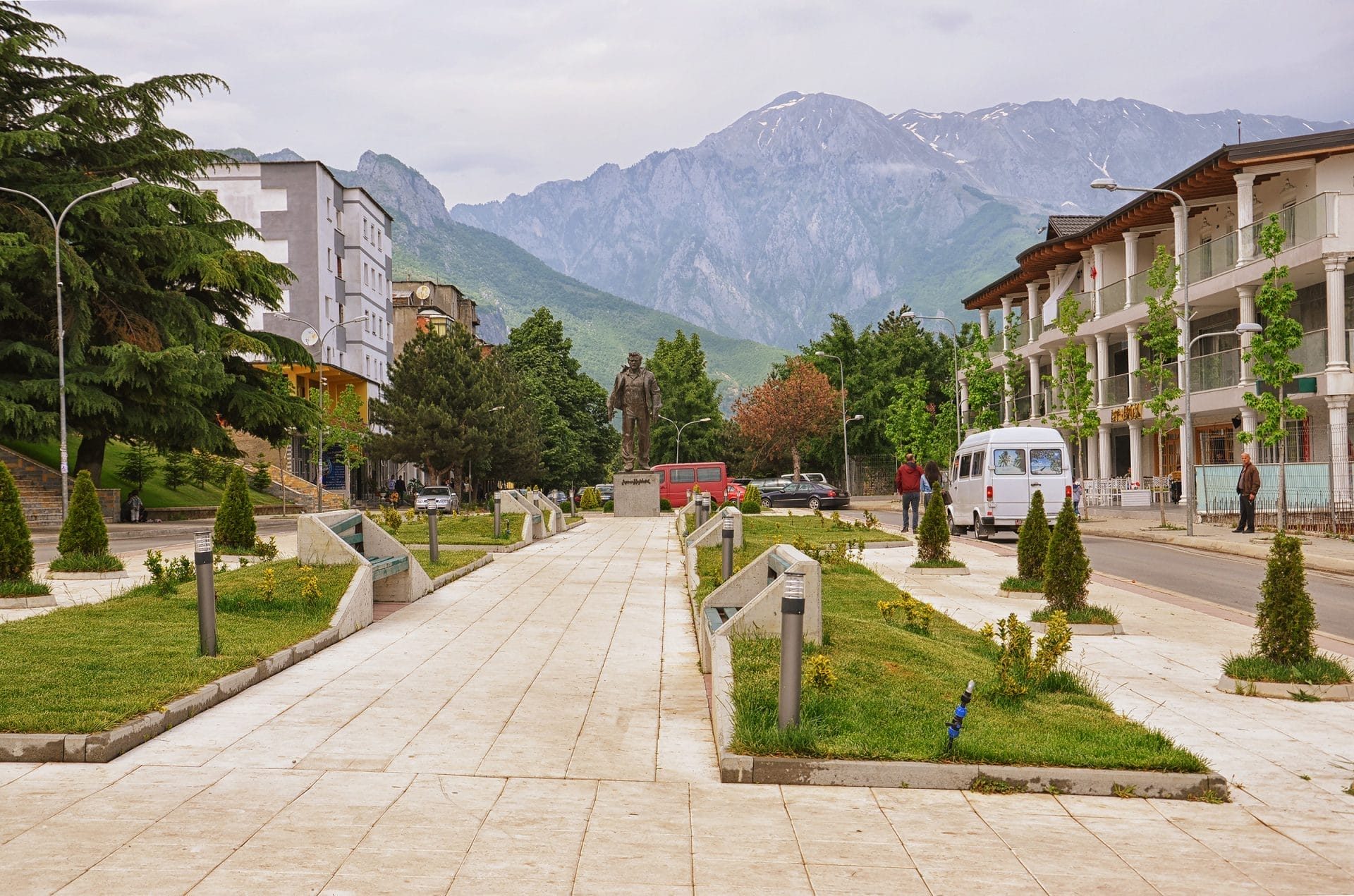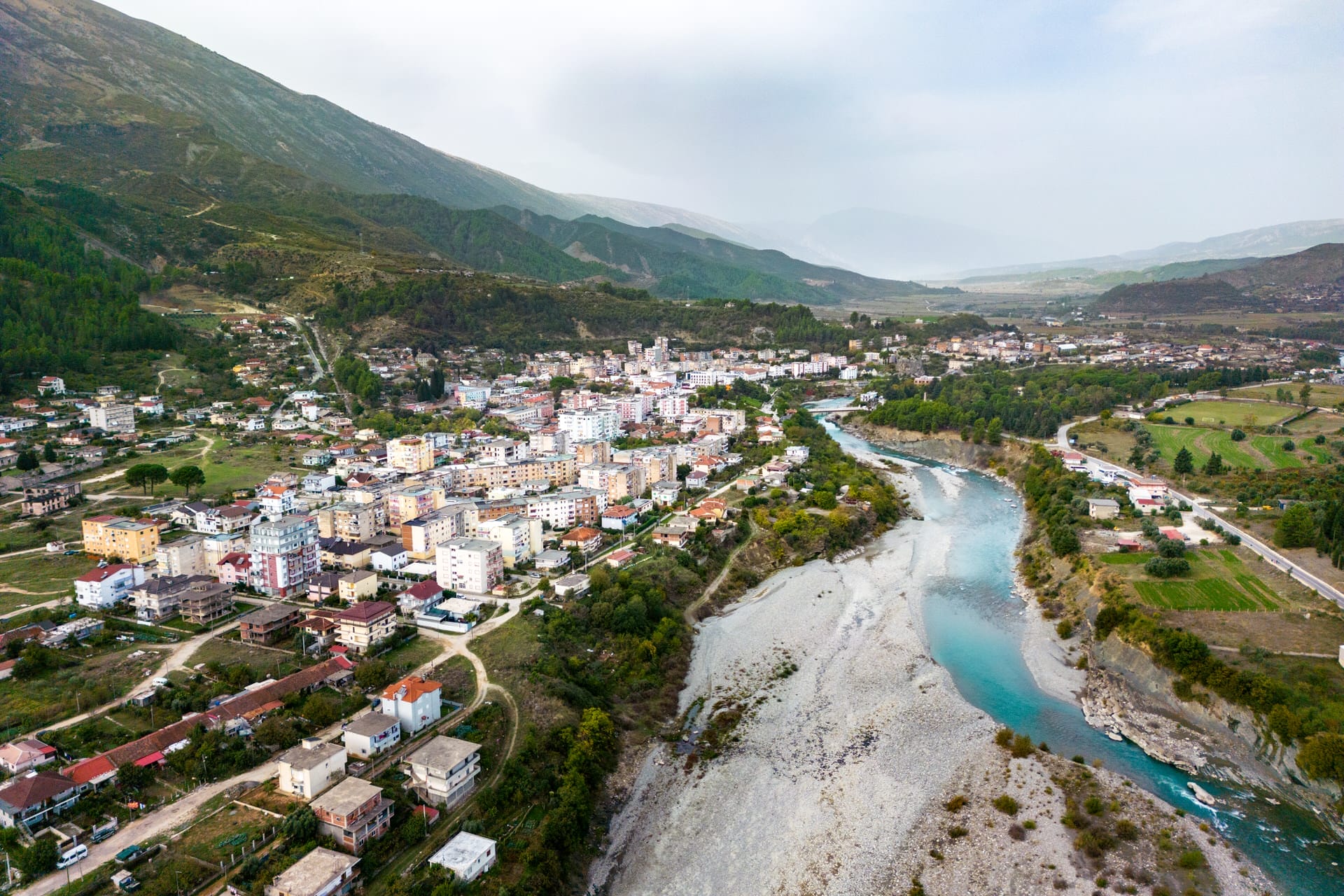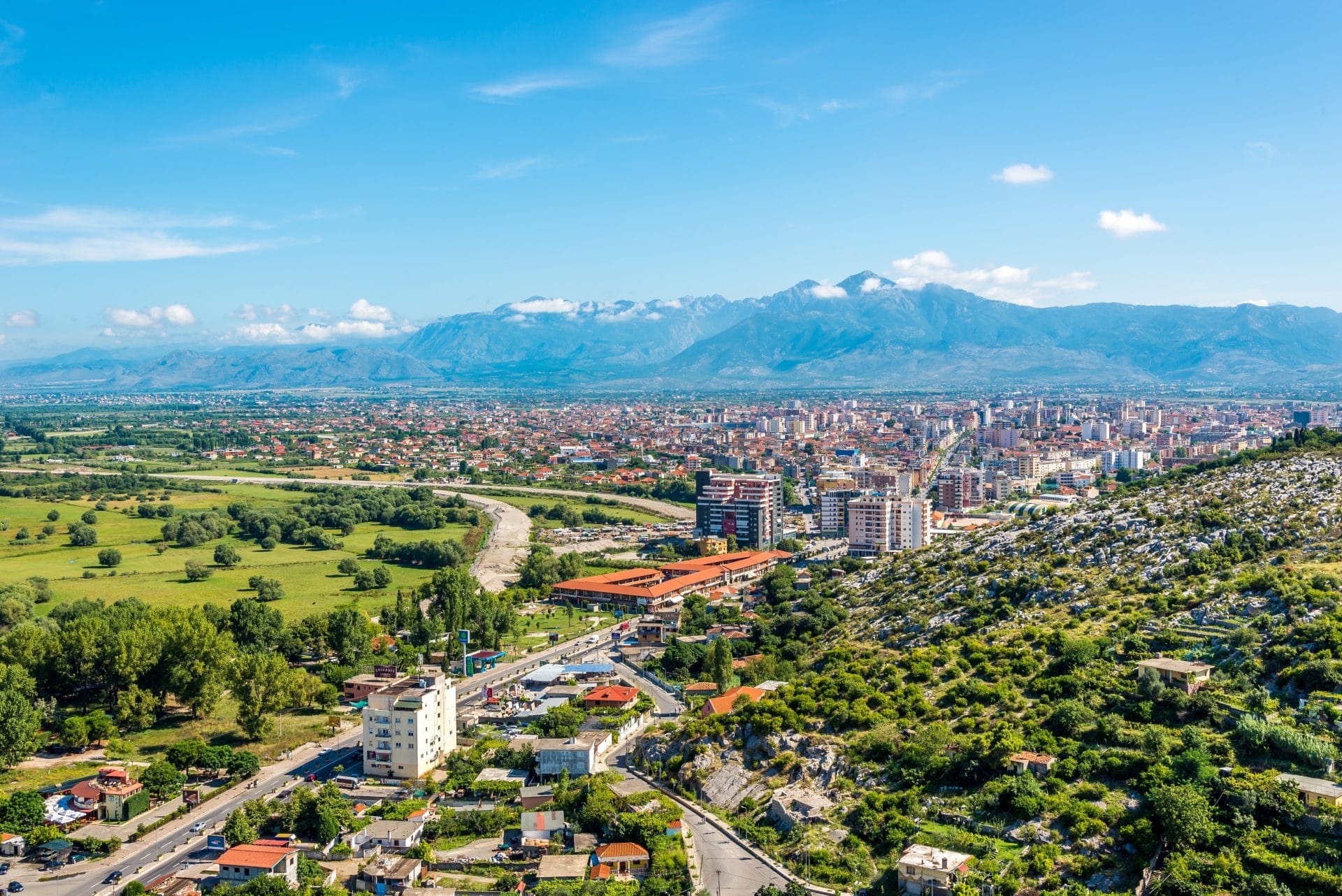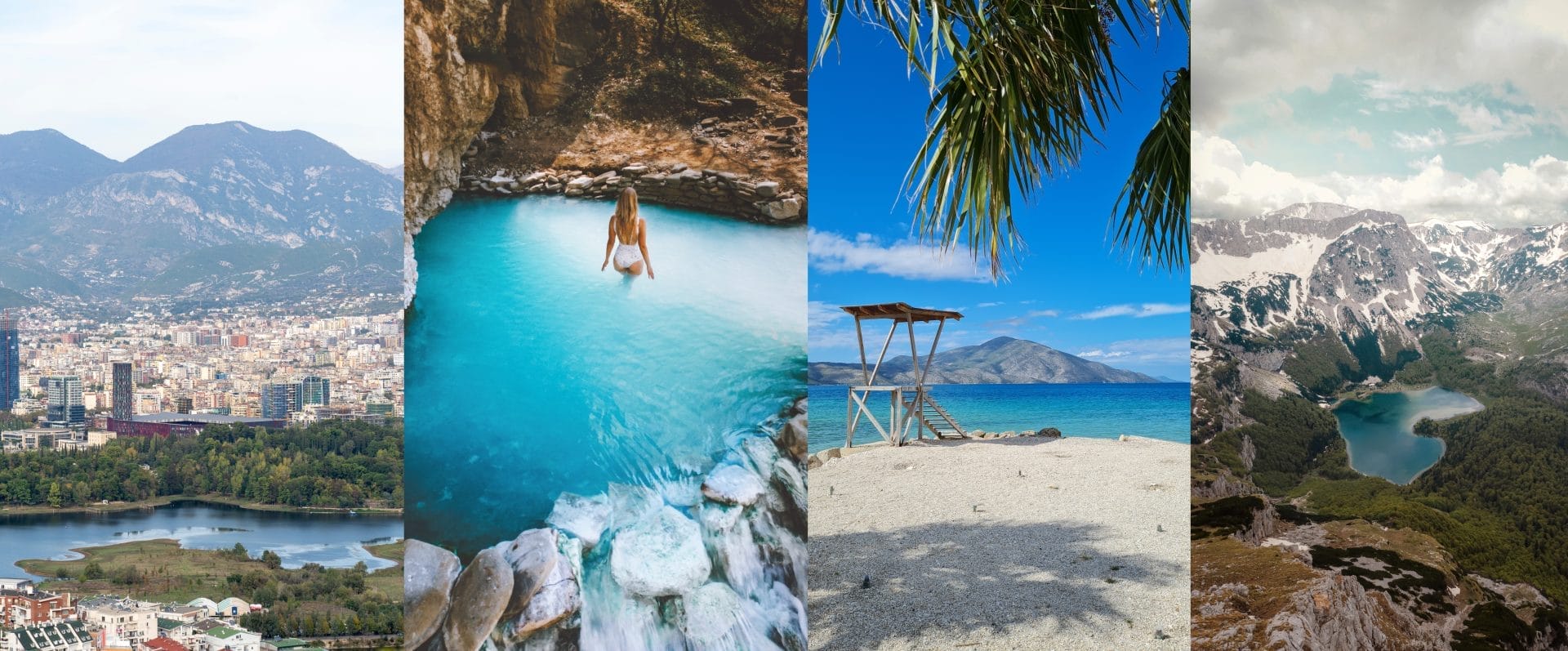
The Lumi i Gashit Valley is home to Europe’s largest remaining primeval beech forest, a living relic from the Tertiary period when much of the continent was covered in woodlands.
This verdant valley contains over 1,000 hectares of magnificent old-growth beech trees, some estimated to be over 350 years old.
Known as the “Albanian Alps,” this region has helped preserve the ancient forest through its remote location and rugged terrain.
A Living Relic
The origins of this forest stretch back over 10,000 years to the third interglacial period when beech trees first migrated to the Balkan Peninsula.
While most of Europe’s native beech forests vanished due to logging, fires, and land conversion over the centuries, the inaccessibility of the steep, narrow Lumi i Gashit Valley allowed its beech stands to endure untouched.
This resulted in a pristine, old-growth forest with rich biodiversity and many ancient trees. Some reach over 50 meters tall, with trunks several meters wide.
Walking through the shaded forest, visitors are surrounded by massive beeches dating back centuries and mossy rocks and small streams.
Where to Find the Ancient Beech Forests
Recent surveys have mapped out six remaining bastions of Albania’s primeval beech forests, where towering ancient trees have stood undisturbed for centuries, their timeworn groves serving as natural time capsules into the country’s untamed past.
Livadhi i Harushës/ She-bear’s Meadow (Malësi e Madhe Municipality)
Lumi i Gashit/ Gash River (Tropoje Municipality)
Curraj i Epërm/Upper Curraj (Tropoje Municipality)
Lumi i Tropojës/ Tropoje River (Tropoje Municipality)
Zall-Gjoçaj (Mat Municipality)
Rrajcë (Përrenjas Municipality)
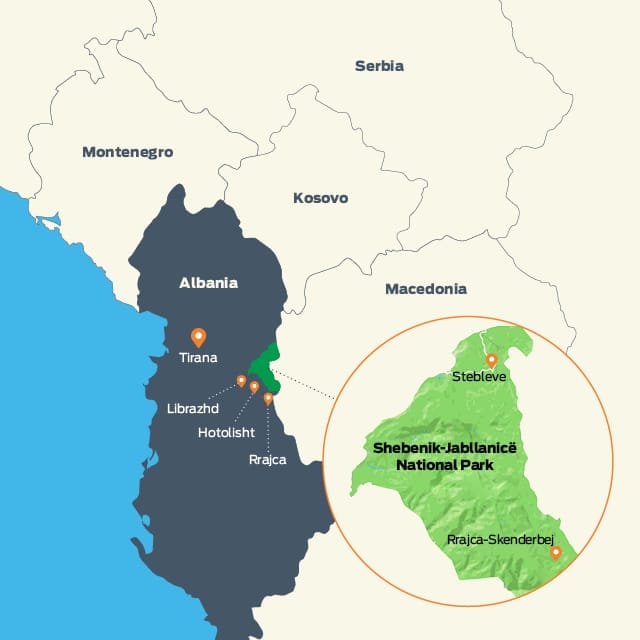
These ancient beech forests remain wild places, untouched by human activity. Four of them are located in the southern Albanian Alps.
Surveys have found trees over 250 years old in Lumi i Gashit and Curraj i Epërm, with some around 400-450 years old – truly ancient trees.
These six old-growth forests are unique natural treasures, still unspoiled by development or industry.
Biodiversity and Ecosystem
The age and continuity of this forest have created an intricate ecosystem home to many rare and endemic species.
Scientists have recorded over 1,300 species of vascular plants, including relict species from the Tertiary period. Beech trees dominate the landscape, but the area also contains deciduous trees like maple, ash, and wych elm.
The abundance of dead wood, standing snags, and fallen logs provides a habitat for many fungi, lichens, invertebrates, and hole-nesting birds.
Rare woodpeckers like the white-backed woodpecker thrive here. Iconic wildlife includes the endangered Balkan lynx, brown bears, grey wolves, and wildcats.
Many forest creatures disappeared across Europe but survived in this isolated haven.
Conservation Efforts
Protecting this primeval beech forest has become a priority for conservationists in Albania and worldwide.
While parts of the valley were selectively logged in the past, large areas remained untouched and were declared a UNESCO Natural World Heritage Site in 2017.
However, threats persist from illegal logging, fires, grazing, and infrastructure projects.
Conservation groups work with local communities to manage the forest sustainably through activities like used furniture workshops, beekeeping, and harvesting of non-timber products.
They hope to balance economic needs with the preservation of the Gashit Valley’s natural splendor.
This ancient beech forest represents one of the last remnants of a wilderness that once blanketed Europe.
Walking under its giant trees offers a glimpse into the distant past when bears, wolves, and lynx roamed unbroken woodlands.
As a crucial habitat for rare flora and fauna, the primeval beech forest is an irreplaceable natural treasure. Strict protection is needed to defend this ecological time capsule from modern perils.
If conserved for future generations, the Lumi i Gashit Valley will continue teaching us about Europe’s primeval forests and inspiring awe at nature’s grandeur.
This unique ecosystem is a living window into the continent’s wild, wooded history.
Significance of Albania’s Primeval Beech Forests
The primeval beech forests of the Lumi i Gashit Valley hold great ecological, evolutionary, and cultural significance.
As one of the last remnants of the pristine beech forests that once stretched across Europe, this area provides a living laboratory to study the structure and function of an ancient temperate forest ecosystem.
The continuity of forest cover for millennia allows natural processes to unfold undisturbed over long timescales.
Primeval beech forests have mostly vanished from Europe, making the survival of Albania’s Gashit Valley stand all the more valuable.
These trees preserve the genetic legacy of wild beech forests that recolonized Europe after the last Ice Age. The diversity of plant and animal species offers a glimpse of postglacial biodiversity.
Many threatened endemic species find refuge here. Thus, Albania’s primeval beech forest is a crucial genetic reservoir and nidus of recolonization if beeches suffer declines elsewhere.
The trees in this forest are also of great antiquity. Beech trees can live for hundreds of years, and those in Gashit Valley have developed for centuries with minimal human impact.
Dating of old-growth beeches helps reconstruct past climate conditions and disturbance events. Their longevity connects modern generations to distant times.
Walking among Albania’s ancient beeches evokes a sense of deep time and gives perspective on fleeting human lifetimes.
Culturally, Albania’s primeval beeches inspire awe and wonder. Environmental philosophers emphasize that preserving untouched nature nourishes the human spirit and provides intangible value.
The solitude of Albania’s virgin forest allows encounters with something beyond humanity, eliciting humility. Saving such ecosystems fosters virtues of prudence, self-restraint, and inter-generational justice.
Unlike any managed woodlands, this rare Albanian haven sustains scientific insights, evolutionary potential, and cultural meaning.
Its integrity summons moral reflection on society’s relationship with nature. Therefore, from many angles, the conservation of Albania’s ancient beech forests is an issue of global significance.
Threats Facing Albania’s Primeval Beech Forests
Despite their immense ecological and cultural value, Albania’s ancient beech forests are imperiled.
Illegal logging represents the most severe threat, as corruption enables unchecked timber extraction within nominally protected areas.
Trucks transport logs out of parks under cover of night using forged permits while officials selectively ignore the plunder.
This industrial-scale logging ravages virgin forests, with chainsaws shattering primeval silence and clear-cuts scarring the landscape.
The damage is compounded by grazing livestock, which hampers forest regeneration and soils through trampling, and planned infrastructure like dams and roads that further fragment intact habitat.
Even resilient natural beech forests may struggle to adapt to climate change, which models forecast will bring hotter droughts, storms, and pest outbreaks.
Together, these diverse pressures risk gradually deteriorating Albania’s old-growth forests through ‘death by a thousand cuts.’
Concerted action across multiple fronts – from law enforcement to climate adaptation – is urgently required to preserve these ecosystems for future generations.
Though condensed, this paragraph aims to retain the essence of the original while underscoring the primary threats facing Albania’s irreplaceable biological and cultural heritage.
Protecting Albania’s Primeval Beech Forests
Safeguarding Albania’s irreplaceable primeval beech forests requires expanding protected areas and prohibiting extractive uses.
While UNESCO designation highlights global significance, national legislation and enforcement must make logging unambiguously illegal, with increased resources for rangers and grazing regulations.
Buffer zones can allow limited community harvesting under guidelines alongside sustainable practices and native forest regeneration.
Fuelwood, mushrooms, and other non-timber products can support local livelihoods while keeping core areas intact.
Outreach should foster community stewardship. International assistance can provide funding, expertise, and debt-for-nature swaps to augment conservation efforts.
Ecotourism can incentivize protection once sustainable. Global cooperation is vital for safeguarding this universal resource.
With commitment and collaboration across local, national, and international levels, Albania’s ancient beeches can persist as sources of wonder, wisdom, and wildness for future generations.
This condensed rewrite aims to distill the essence of the original paragraph while underscoring the key elements of an integrated conservation strategy based on expanded protected areas, sustainable livelihoods, and global support.
Your Turn to Visit
Albania’s ancient beech forests are a must-visit for nature lovers, eco-tourists, and anyone with a sense of adventure.
Whether you’re a seasoned hiker or a casual traveler, the primeval beech forests of Albania offer an unforgettable experience.
So why wait? Pack your hiking boots, grab your camera, and prepare to be amazed by the natural beauty of Albania’s ancient beech forests.
Remember, when exploring these ancient woods, you’re not just visiting a place – you’re stepping into a story unfolding for thousands of years.

